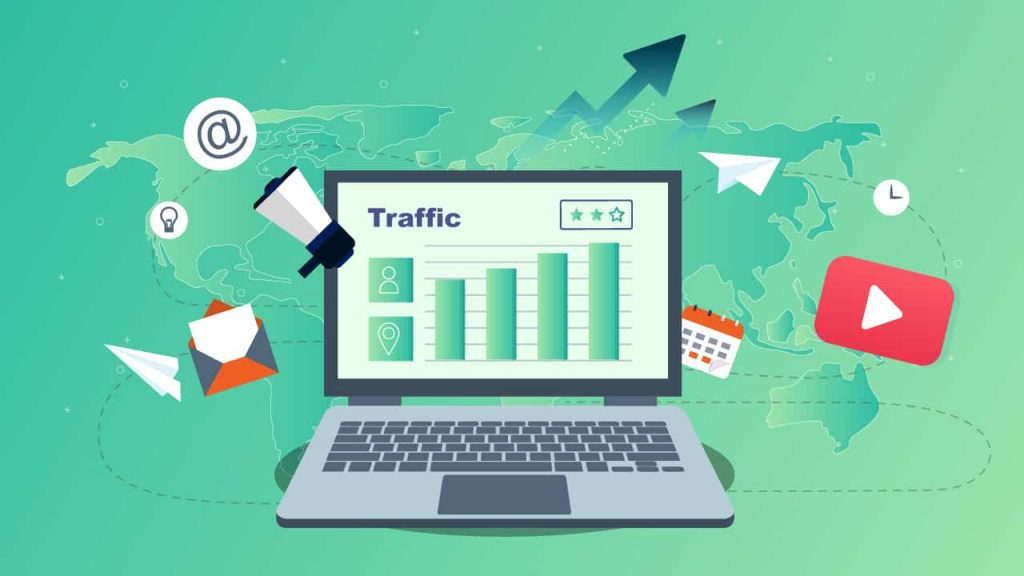How to Make a Living Blogging
Blogging has emerged as a popular way for people to share their passion, voice their opinions, connect with others, and generate income. With over 600 million blogs worldwide and over 100 million new blogs created yearly, blogging's influence continues to grow. But can you make a living from writing blogs? If you approach blogging strategically and work hard, the answer is yes. This comprehensive guide covers everything you need to make a living blogging and turn your blog into a money-making enterprise.
Table of Contents
Assessing Your Reasons for Blogging
Before diving in, carefully consider why you want to blog for a living. Making money through blogging requires immense dedication and time, especially starting. Assess whether blogging aligns with your skills, interests and lifestyle.
Some key questions to ask yourself:
- Why do I want to blog? Is it to share my passion, creative outlet, promote a cause, build community, or make money?
- What topics excite and interest me enough to write about regularly? Consider niches in which you have expertise.
- Am I a strong writer who enjoys creating content? High-quality writing is key for any successful blog.
- Can I commit significant time weekly to writing content and promoting my blog?
If your motivation stems from passion versus just money, you’ll be better equipped to power through the challenges of turning blogging into a viable income source.
Choosing a Profitable Blog Niche

The first step to blog success is selecting the right niche. Your niche dictates your audience, competition level, monetisation options, and income potential.
Consider Your Interests and Skills
Focus on niches aligned with your innate interests and abilities. Blogging requires significant time investments, so loving what you do makes the work enjoyable. Analyse your expertise, education, credentials, hobbies, and life experiences to determine profitable niches you can credibly write about.
Research Popular Niches
Conduct keyword research to identify popular, high-traffic niches. Some lucrative options include:
- Finance and business
- Travel
- Food and recipes
- Parenting and family
- Health, nutrition, and fitness
- Self-improvement and personal growth
- Technology and gadgets
Niches related to solving problems or teaching skills also perform well. Prioritise options aligned with your passions that serve audience needs.
Assess Competition
It's vital to evaluate competitor blogs already thriving in your prospective niche. Use tools like SEMrush, Ahrefs, or Buzzsumo to analyse competitors' domain authority metrics, traffic statistics, social media followers, and engagement.
Choose niches with interest and traffic growth potential. While intense competition means an engaged audience, completely saturated markets will be harder to penetrate. Seek the ideal middle ground – an established niche with room for a unique new voice.
Building Blog Authority
Gaining recognition and trust as a credible industry voice is pivotal to blog profitability. Tactics to establish authority include:
Create Valuable, Shareable Content
Offer original, high-quality content, solving reader challenges. Well-researched advice articles, how-to guides, listicles, reviews, expert interviews, and personal success stories perform well.
Optimise for SEO
Use targeted keywords, meta descriptions, alt text, headings, and backlinks to improve search visibility. This expands reach to readers who are proactively seeking your solutions.
Showcase Credentials
Highlight pertinent credentials like education, certifications, career experience, awards, public speaking engagements, publications, testimonials, and press features.
Engage on Social Media
Share content, provide value, build connections, and interact with those in your niche across various platforms. Be helpful, not overly self-promotional.
Collaborate with Influencers
Guest post on popular industry blogs or invite influencers for guest contributions, quotes, interviews, or testimonials. This raises perceived credibility through third-party validation.
Selecting a Blogging Platform

With the fundamentals of topic selection and authority building covered, it's time to choose a blogging platform. Keep these factors in mind:
Ease of Use
Consider your technical skills when assessing platforms. Options like WordPress and Medium are intuitive for beginners, while platforms like Ghost and Joomla offer more complexity for advanced users.
Features
Assess elements like website builder tools, template options, formatting capabilities, multimedia integration, SEO optimisation, analytics, security protections, storage space, speed, and scalability needs.
Ownership and Creative Control
Self-hosted open-source platforms like WordPress offer full creative license and ownership, unlike restrictive options like Tumblr and Blogger. However, they require web hosting purchases and technical maintenance.
Cost Considerations
Free blogging platforms typically limit capabilities or insert more ads. Investing in premium options (around $5-50 monthly) allows monetisation features, customised branding, enhanced support, and reduced ads.
WordPress strikes the best balance across these criteria for most bloggers – it's user-friendly, fully customisable, cost-effective, and ideal for monetisation.
Creating a Blog Content Strategy

With a niche selected, develop an editorial strategy detailing what types of content you’ll produce and publishing cadences. Creating high-quality content that engages your niche is vital for building readership and authority.
Consider these elements in your content strategy:
Types of Content
- Long-form tutorials and how-tos
- Industry trends, commentary and analysis
- Interviews with industry experts
- Product reviews and recommendations
- opinions, experiences and learnings
- Data studies and original research
Cadence
- 1-2X per week to start
- Ramp up to 3-5X per week once established
Formats
- Long-form articles (1,500+ words)
- Short-form articles (500-1,000 words)
- Videos
- Podcasts
- Email newsletters
- Infographics and visual assets
Creating a diverse content mix keeps your audience engaged and provides more options for monetising.
Building Website Traffic
Simply creating content won't cut it. You need readers viewing your posts to profit. Boost website traffic by:
Optimising Content Discovery
- Use SEO best practices, including metadata, alt text, descriptive URLs, and strategic internal linking across posts.
- Produce ongoing content aligned to reader search queries and interests
- Update and improve existing popular posts
- Promote content on social media
- Build backlinks from industry websites
- Create opt-in lead magnets like free downloads, quizzes, or giveaways in exchange for emails to foster repeat traffic.
Expanding Reach Through Marketing
- Pitch guest posting opportunities to complementary websites
- Arrange creative partnerships and cross-promotions with aligned bloggers or brands
- Participate actively in niche social media groups and discussions
- Claim and optimise online directory and profile listings
- Pursue earned media coverage through press releases and pitches
Optimising Site User Experience
- Improve site speed and navigation
- Enhance visual appeal through images, videos, spacing, clean layouts and presentation consistency.
- Feature useful on-site search tools, archives, categories, tags, menus, and internal links.
- Include visible social sharing buttons and subscribe options
- Enable commenting to foster user-generated content and repeat visits through follow-up notifications
Promoting Content

While search can drive ongoing traffic, you need visitors from day one. Promote your content through both free and paid distribution channels to maximise reach.
Leverage Social Media
Share blog posts across networks like Facebook, Twitter, Linkedin, Pinterest and Instagram. Engage through comments, shares and follows. Use relevant hashtags.
Grow Email Subscribers
Offer an opt-in incentive for sign-ups, like discounts or exclusive content, to rapidly build email subscribers as a free promotion channel. Send new article notifications, curated links and special offers.
Guest Post Outreach
Write relevant guest posts for popular sites related to your niche with links to your content to tap into new audiences. Ensure guest pieces provide original value vs. just promotional value.
Paid Ads
Facebook, Instagram, and Google Ads can effectively get content in front of your target viewers. Allocate a small budget to test performance for critical posts.
Influencer Marketing
Have niche influencers review or share your content if it offers a unique take they think their following would benefit.
The goal is to build recurring readership traffic that is less dependent on ads or ephemeral social media. Email, organic search and direct visits to your site should increase over time, indicating growing authority.
Building Community
Fostering genuine engagement and discussions between you and your readers creates loyalty beyond just content. Human connection builds trust and attachment, encouraging return visits.
Respond to all comments on your blog posts, questions sent directly and feedback through social media and email. Make readers feel heard by acknowledging challenges raised or incorporating suggestions into future content.
Send personalised responses to subscriber milestones like 100th blog reader and top 10 most engaged. Spotlight loyal community members through quotes, features or references in content when relevant.
Consider free community-building offerings like forums, Facebook groups, webinars, expert Q&As and contests that encourage participation while establishing your expertise.
Building an Email List

Email marketing remains an integral blogger revenue source. Collecting subscriber emails allows direct, lasting reader connections despite fluctuations in social media and search engine algorithms.
Email Capture Tactics
- Offer “calls to action” across all posts and pages
- Provide opt-in incentives like lead magnets for free weekly tips
- Use popup or slide-in email subscription bars
- Show the subscription box in the blog sidebar or site footer
Email List Building Tools
Integrate user-friendly email subscription services into your website like:
- MailerLite
- ConvertKit
- AWeber
- MailChimp
Use popup and slide-in tools like OptinMonster and Hello Bar to help convert website visitors into subscribers.
Generating Income From Blogging
Building ample traffic and an engaged subscriber base sets the foundation for profits. Some proven blogger monetisation models include:
Display Advertising
Join Google AdSense or other ad networks to earn money by allowing paid ads on your site pages. Ad placement and incomes vary based on niche and viewer demographics. Top-earning blogs make thousands through optimised ad units with high click-through rates.
Affiliate Marketing
Affiliate programs pay bloggers commissions for sales or leads from linked product recommendations. Rates range from 1-75% depending on vertical. Amazon, ShareASale, FlexOffers and Rakuten are top networks.
Pros:
- It is easy to integrate affiliate links into existing content like reviews
- Utilise your influence and trust to generate transactional income
- Mostly passive once links are set up
- Thousands of affiliate programs across all verticals
Cons:
- Managing cookies and links to ensure proper crediting can be complex
- Commissions are highly variable month to month based on traffic and conversions
It is ideal for product-focused niches where detailed reviews and recommendations drive purchases. Ensure transparency with readers and disclose affiliate relationships.
Sponsored and Brand Partnership Content
Get paid by brands seeking exposure before your audience. You maintain creative control in native advertising collaborations that align with reader interests. Branded content approaches encompass:
- Sponsored posts
- Product showcases
- Giveaways or contests
- Social media promotions
- Brand ambassador or influencer campaigns
- Newsletter sponsorships
Digital Products or Premium Memberships
Creating educational digital products like online courses, ebooks, templates, workshops, and guides provides multiple income streams ― upfront purchases and ongoing backend sales. It requires significant upfront effort but maximises profit margins in the long term.
Pros:
- Higher profit margins selling your creations (up to $97+ price points)
- Recurring passive income through backend access and updates
- Leverage existing content and expertise into sellable assets
- Builds personal brand, authority and engagement
Cons:
- Requires significant time and effort investment in creating quality products
- Managing secure access, fulfilment system and customer services
- Promotional costs to drive awareness amid competition
- Complex sales funnel and technology requirements
Works for bloggers with engaged audiences who want more premium or exclusive education and access. It allows you to diversify from ad-based models and create diverse assets.
Consulting or Coaching Services
Monetise your expertise through personalised consulting calls, masterclasses, or coaching packages for industry newcomers. This works for experienced bloggers recognised as trusted thought leaders.
Managing Blogger Income Expectations

Be realistic; blogging revenue takes time and effort to build. Many factors influence income, like niche, competition, traffic volume, audience type, content consistency, and economic conditions. While $100 per month within the first year is doable, $5,000+ per month from blogging alone generally requires several years of commitment.
Blogging Income Statistics
- The top 10% of bloggers earn over $75,000 annually from their blogs, according to Blogging.org.
- Bloggers averaged $3.89 per 1,000 page views through display ads based on 2021 MonetizePros data. Higher trafficked blogs earned over $7 per 1,000 views.
- Typical blogger income sources break down as follows per Superb Blog:
- 26% Advertising
- 23% Affiliates
- 18% Products/Services
- 17% Sponsored Posts
- 8% Email Newsletters
- 8% Other
Have realistic expectations, diversify monetisation streams, stay persistent, and remain patient in reaching profitability milestones. View blogging as a long-term investment in your influence, audience, and personal brand.
Full-Time Blogging Logistics
Transitioning from side hustle blogging into full-time self-employment introduces new elements around taxes, insurance, financial planning, legal protections, tools and workflow. Don’t go in unthinkingly to avoid missteps as income and deductions increase.
Time Management & Productivity
Blogging full-time allows control over when and where you work but can lead to overload and burnout without structure. Maintain focus by segmenting blogging tasks, using templates for consistency, batching everyday activities and sticking to daily/weekly goals.
- Check emails or social media at set times rather than constant reactivity
- Separate days for content creation vs promotional activities
- Block times for strategic work like product launches, not just content
- Use templates for workflows like video editing, image creation and emails
- Automate where possible with timed emails, post-scheduling and standardised offers
Without office accountability, diligent calendar blocking, notifications and separation of work/life boundaries are essential productivity tactics.
Legal & Financial Considerations
As income increases, intelligent financial planning and legal protections get critical to reducing tax and risk exposure:
Business Structure – Determine whether to operate as a sole proprietorship, single member LLC, S Corp or C Corp based on liability protection needs, costs and tax implications.
Accounting Software – Platforms like QuickBooks help properly track income, deductible expenses, quarterly estimated taxes, profit/loss by revenue stream and other key financials.
Tax Strategy ― Work with a CPA to maximise write-offs like mileage, home office, equipment, internet service, subscription costs, contractors and other deductions to reduce the tax burden. Keep organised records.
Contracts ― Have written contracts for sponsors, advertisers, affiliates, contributors, clients and any paid arrangements to protect interests on both sides.
Insurance ― Evaluate needs for errors & omissions, general liability, cyber security and other policies as legal shields from potential claims. Costs vary based on business size and risk exposure.
Savings & Investments ― Avoid spending total income amounts each month. Save at least six months of expenses as an emergency fund. Invest remaining profits into retirement accounts, passive index funds, real estate or other assets.
Thoughtful financial foundations enable stability and growth for full-time blogging as your primary income source.
Tools & Team Support
Specific tools become more critical when blogging full-time to enhance capabilities as a solopreneur:
Web Host & Domain – Fast and secure web hosting and domain registrar to ensure maximum uptime and performance. Avoid the limitations of free blogging platforms.
Email Service – Use a professional email address and account using your domain name to build credibility and deliverability. Integrate with CRM.
CRM Software – Centralised dashboard for collecting audience data like email subscribers, engagement tracking and lifecycle management. Platforms like MailChimp, ConvertKit or ActiveCampaign help segment and personalise marketing messages.
Community Software – Online community and forum platforms like Tribe, Circle or Mighty Networks facilitate niche connections and discussions year-round.
IRS Help – Tax prep services like TurboTax or hired CPAs handle itemisation, quarterly estimates and tax reduction optimisations.
Legal Help – A business lawyer assists with operating agreements, trademarks, copyrights, contracts, terms of service and other binding documents.
Content Tools ― Stock media, design software, proofreading services, transcription and virtual assistants help efficiently produce quality content at scale.
While bootstrapping as a solopreneur initially makes sense, add team support strategically as blogging income allows.
Maintaining Motivation & Consistency

Blogging involves a constant stream of effort and ups and downs. Motivation inevitably wavers at times from burnout, life complexity or limited visibility into progress. Combat this through intentional consistency rituals, community and recalibration techniques.
Rituals & Routines
Rituals are recurring practices that reinforce priorities and skill-building. Establish blogging mottoes, manifestos or challenges to guide daily progress—plot ambition on quarterly roadmaps broken into monthly and weekly objectives.
Routines eliminate decision fatigue around repetitive tasks:
- Standard formats for headlines, metadata, filenames and image sizes
- Reusable outlines and templates for different content types
- Set places and cues for writing sessions or research tasks
- Batch recording podcast episodes or videos for easier production
- Checklists for final proofing before publishing posts live
Ritualised behaviours tied to identity and strengths—schedule blocks for different activity types, from creative to administrative. Habitual repetition powers consistency.
Community & Accountability
Connect regularly with a small group committed to mutual growth. Mastermind colleagues push you while you provide reciprocal motivation—schedule coworking sessions for shared momentum.
Bring on collaborators like freelancers, agencies and interns to inject energy into new projects. Their contributions and enthusiasm fuel your own while lightening the workload.
When accountability wavers, regain priorities by openly sharing challenges with engaged readers who offer feedback or encouragement. Their reminder of your influence provides purpose.
Recalibration Retreats
Counter fatigue with periodic breaks for broader replenishment: fully disconnect, reflect on learnings, and realign strategy. Travel somewhere inspiring to shift perspective.
Revisit core motivations, passion sources and differentiating strengths that ground personal meaning behind income goals. How can you elevate impact?
Analyse site data, reader surveys and market trends with fresh eyes to pinpoint new opportunities or correct ineffective approaches. What assumptions need challenging?
Time for introspection recharges inner perseverance, allowing you to start again with a refined vision. You don’t drown by staying still but rather by only pushing forward. Paddling harder ignores when direction needs adjusting. Continually recalibrating, motivation is restored through renewed purpose, plans and community support.
Concluding Thoughts
Blogging holds incredible income potential if executed strategically over time. By publishing valuable niche content, optimising discovery, expanding reach, building subscriber relationships, and enabling varied monetisation streams, bloggers can ultimately replace a day job salary through online work they’re passionate about.
Remember that achieving a prosperous living from blogging alone typically requires years of grinding. Thousands of aspiring bloggers abandon the commitment too early – don’t let that be you! Stay patient and persistent throughout building traffic, authority, and trust with readers.
The freedom, joy, and financial rewards of running a thriving blog business make all the effort worthwhile. Follow this comprehensive guide and stick with the process through ups and downs to eventually reach your blogging income goals. You’ve got this!
Now, to wrap things up, here are answers to some frequently asked questions on profiting from blogging:
FAQs on Making a Living Blogging
What types of blogs are most profitable?
Niches like finance, technology, business, health and wellness, lifestyle, travel, and food have high earning potential. Problem-solving, teaching skills, or sharing life experiences also monetise well.
How long until you make money blogging?
Many bloggers don’t profit for 6-12 months. Focus first on value for readers, then integrate ads and affiliates once established. Earnings compound over the years as traffic and influence grow.
Can you make a living from blogging?
Yes! Top bloggers make from $50,000-$500,000+ yearly. Most average under $50k but supplement other work initially. Seven-figure incomes demand huge dedicated audiences. Patience and persistence pay off.
How many blog visitors do you need to make money?
One thousand daily pageviews can net ~$100 monthly. Ten thousand daily views yield ~$500. $2,000+ monthly requires 50,000+ pageviews. High-traffic blogs with 100,000+ views produce $5,000+. Ad rates and niches vary.
What percentage of bloggers make money?
Roughly 5-7% of bloggers make a full-time living, while ~15% earn supplemental income. But with strategic planning, traffic building, and monetisation, most bloggers can eventually profit.
